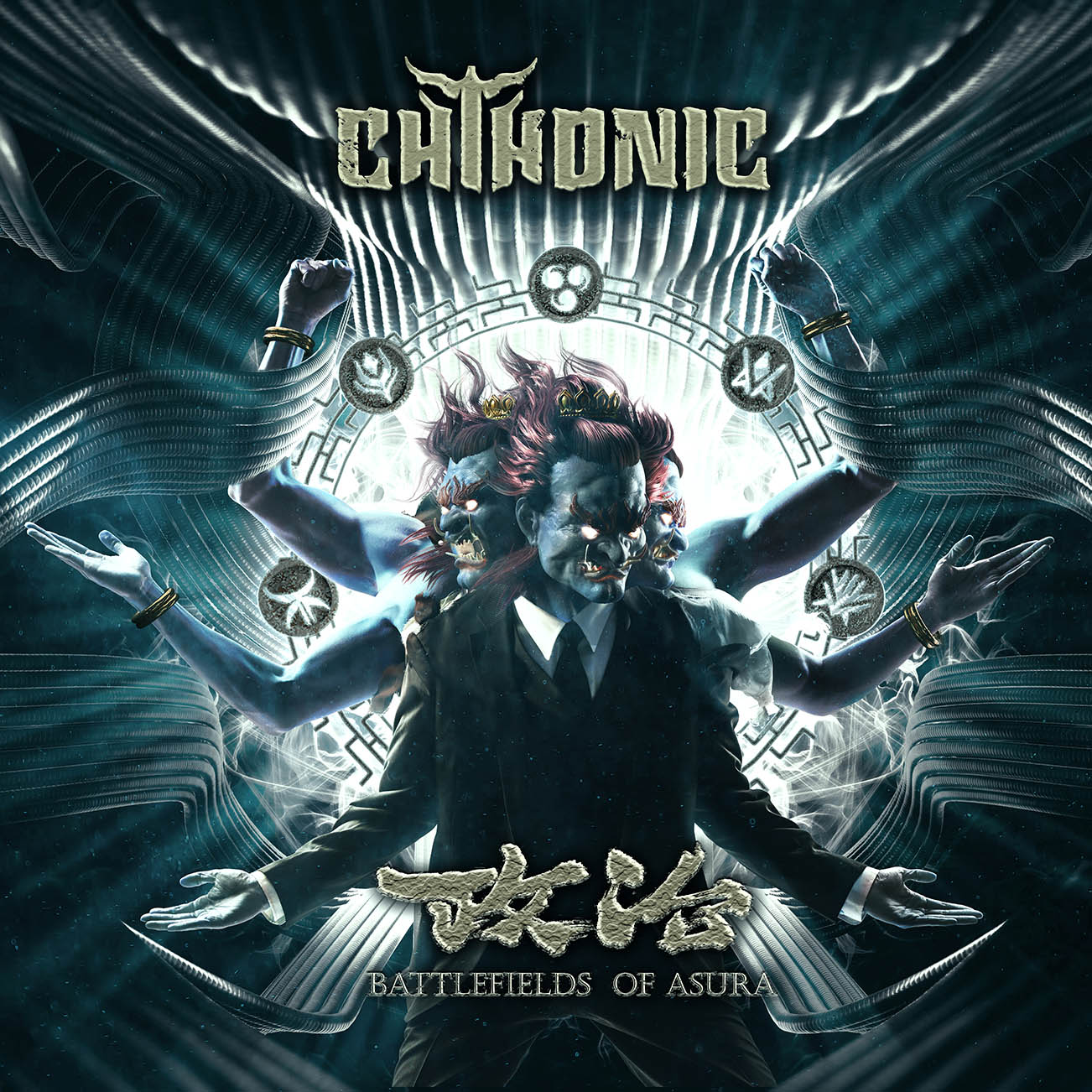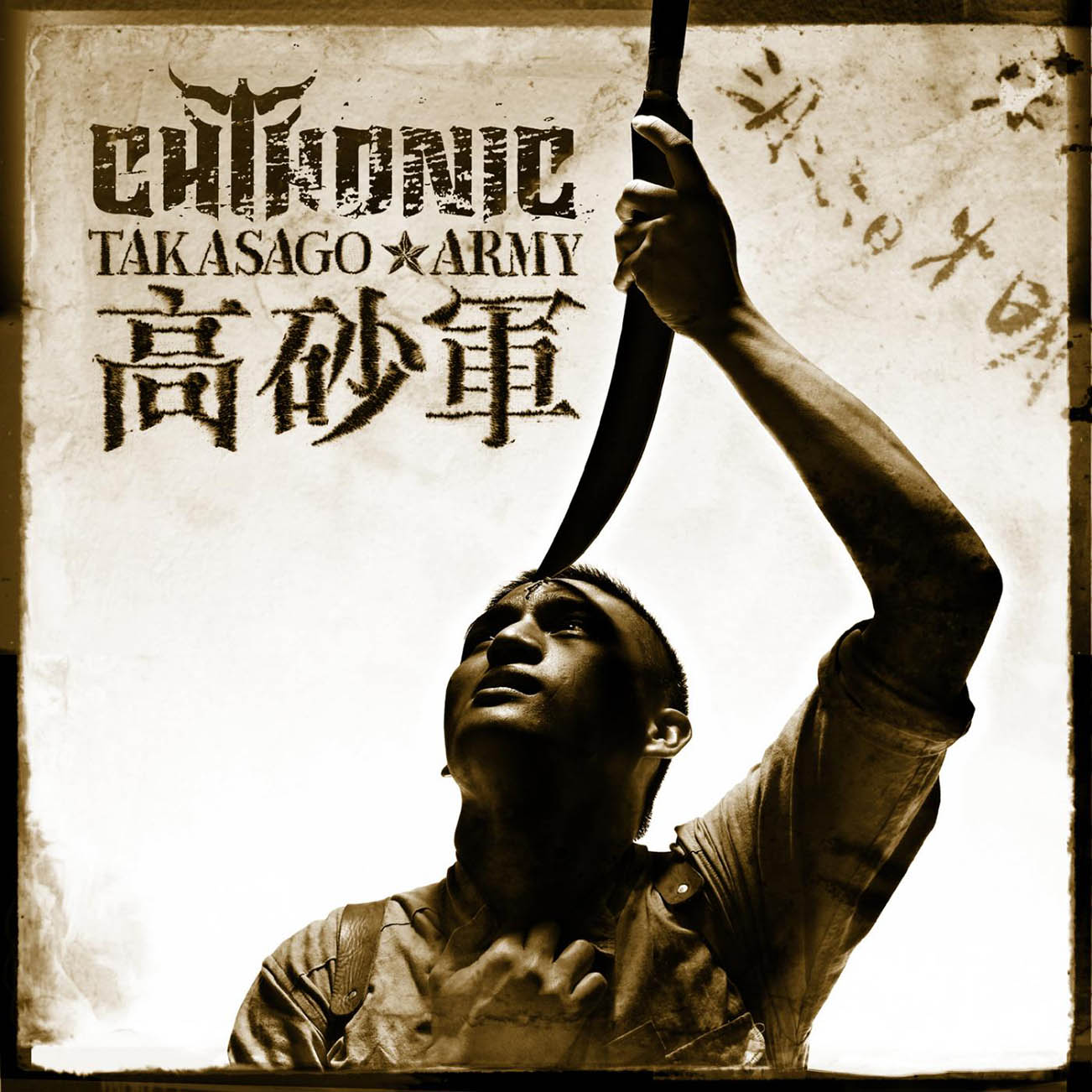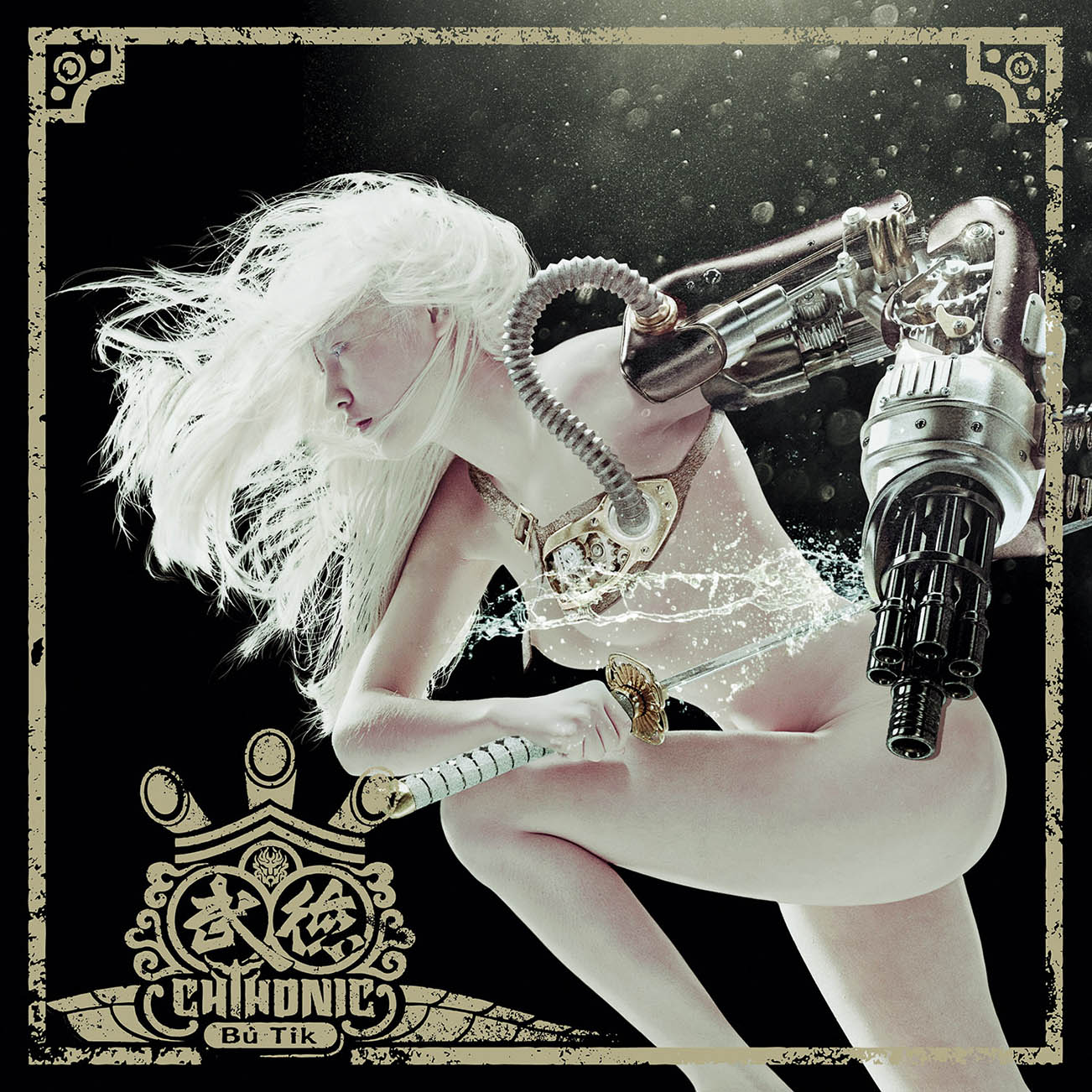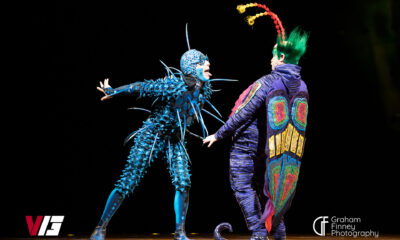Features
…And We Call You Home: An Exploration of CHTHONIC’s Lyrics & Heritage
Chthonic’s newest album, Battlefields of Asura, ties together the events of their past four recordings to create a cohesive narrative that discusses the nuances and intricacies of rewritten history and activism. In this longform article, we explore the mythology and history which is interwoven in their lyrics.

When discussing a band in the context of its scene, the way in which their country of origin’s history or mythology shapes an album is rarely mentioned, unless it’s tied to the lyricism. Even if it is, the information is usually presented in a different language which, unless context and translation are available, is difficult to understand. Despite all of this, we are still presented with a rich, musical tapestry of lyricism and imagery that resonates with us and makes us look for what we don’t understand.
In the case of Taiwan’s Chthonic, their music provides a look into their current activism and their portrayal of both past and present Taiwanese history. They have also evolved as a band that is not afraid to discuss political issues openly, even when they have been banned in China for their political views.
Activism, History, and Uncovering the Truth.
Throughout their career, Chthonic has delved deep into their native history, providing insight and thought into several historical events that have occurred since Taiwan became a self-governing state that demands to be recognized as its own sovereign country. Members of the band are also politically affiliated – lead singer Freddy Lim is the most overt and vocal: he has served as the Chairman of the Taiwanese chapter of Amnesty International and he created the New Power Party, leading him to become a representative in the government.
“Flames Upon The Weeping Winds” is the group’s most recently released video from Battlefields of Asura.
He, among other things, aims to see Taiwan as an independent country. Although Taiwan has tried to declare independence from China numerous times, China has threatened to use military force to quell any formal declaration of independence. This has stifled Taiwanese-Chinese relations, despite having strong economic ties, as both China and Taiwan have been fighting to be recognized as “China” since the end of the Chinese Civil War in 1949 [1].
Because of this standoff, a lot of history has been rewritten by the government before the one-party rule was eliminated in 1987. This was evident in how the Kuomintang (KMT; the Chinese Nationalist Party) handled the aftermath of the 2/28 Massacre in 1947 through the event known as the White Terror. After the KMT violently suppressed open rebellion and placed Taiwan under martial law, around 140,000 Taiwanese were imprisoned, where 3,000 to 4,000 of them were executed. The first to be prosecuted by the KMT were Taiwan’s social and intellectual elite, as the KMT feared that they would become sympathetic with communism or resist KMT rule. According to an article published in the Taipei Times discussing the White Terror:
“During following years of the White Terror, thousands of people were arrested, imprisoned, tortured and murdered through the web-like secret agent system of the KMT’s KGB-style security apparatus, the Taiwan Garrison Command. The scene could take place anywhere at any hour, day or night: family or friends would watch their loved ones being dragged off by armed men, or passers-by would witness a person being seized by armed men off the street, tied up, blindfolded, bundled into a car and driven to police headquarters […] and would simply vanish after being taken away by government intelligence agents.”[2]

Although most prosecutions occurred between 1950 and 1953, martial law lasted until 1987. Following the end of martial law, fear dissipated and many were able to discuss the 2/28 Massacre and the events surrounding the White Terror. Despite the lift, there are still a lot of questions left unanswered regarding the extent of the White Terror and the exact number of deaths. However, whatever information was uncovered left many reeling from the inconsistencies of their own schooling. As Freddy Lim has discussed in a past interview with Noisey:
“(After) martial law was lifted, and book bans were lifted, I was able to read a lot of books. I was able to read a lot of Taiwanese history about the government, which was the story of my grandparents. I was shocked. Eighteen years of my life were stolen by the government. I was so angry. I started joining campaigns that were against the government. I couldn’t vote, but I could be a volunteer. I got more engaged with the social movements. I was able to debate and become educated… When I got into history and politics… I switched into heavier metal. It expressed my strong, heavy anger. I cried so much during those two years. It’s not that easy to accept that you didn’t know about your country and your history.”[3]
And, thus, Chthonic had a reason to look into their history and uncover the truth for the world to see through their music, even though they would have to fight censorship and bans.
Get nostalgic with this classic video for “49 Theurgy Chains” off Mirror of Retribution.
All Roads Lead to the Battlefield.
Despite their political leanings, Chthonic also portray a lot of mythology and history in their lyrics. Although I briefly touched upon Taiwan post-World War II, Chthonic tend to look back further into the past, particularly to when Japan took over Taiwan from 1895 to 1945. While also discussing the various events that make up the concepts of their albums, they are also able to tie in Chinese-Taiwanese mythology in order to drive the point home. This brings us to what is unofficially known as the “Souls Reposed” trilogy: three albums that discuss three major events in Taiwanese history.
They are Seediq Bale, released in 2007, which discusses the Wushe Incident of 1930, where Japanese soldiers killed more than 644 Seediq people in retaliation after a group of them killed 134 Japanese civilians due to simmering resentment; Mirror of Retribution, released in 2009, which discusses the 2/28 Massacre; and Takasago Army, released in 2011, which discusses the Takasago Army, a group of volunteer soldiers that fought for Japan during World War II and had been recruited from the Taiwanese aboriginal tribes.
Each album discusses each incident, but there is also a mythological layering to the concepts beginning with Mirror of Retribution. As a parallel to the modern event, Mirror discusses the story of Phuan Tsing-guan, a man who was known to be able to transverse between worlds, and who was considered to be the strongest medium, as he could summon the Eight Generals in order to protect the Sing-Ling temple.

As Chinese forces began to massacre everyone that was perceived as having taken part in the rebellion, Tsing-guan chose to use his supernatural powers to protect his friends and people, deciding to retrieve the Book of Life and Hell from the deepest pit of hell in order to use its power. Leaving his physical body behind, Tsing-guan almost managed to retrieve the Book, only for him to return to the real world without it. To try to get to hell again, he commits suicide and gets sent straight into the Tenth Level of Hell, with his supernatural powers on full display.
However, his plans are thwarted by Guan-Yim, the goddess of mercy, who punished him for his transgressions by making him the Mirror of Retribution’s eternal guardian. He could only watch in horror as he saw his people massacred and oppressed by outside forces throughout millennia, eventually looking into the void after everything had been wiped away, tying to the events and concepts of Bú-Tik.
According to Chthonic bassist Doris Yeh, there are various elements from the past three albums that ties everything together. “Yes… they are all about self-defense, righteous violence, and armed spirits. They are all Taiwanese historical events which can reflect the idea of the album title. But the fans will find out there are more stories hidden behind these events, and they will find out it’s connected to the earlier three albums when they listen to the end. They will learn the whole album is about the insanity of Tsing-Guan, who has been locked at Mirror of Retribution for millions of years.” [4]
“Takao” is off of the band’s follow-up to Mirror of Retribution, Takasago Army.
In Takasago Army, the story changes to a man named Wubus Bawan, a man who survived the Wushe Incident and decided to join the Army in order to reaffirm his identity as Seediq (at this point, it had been instilled in him that he had one identity, and that was Japanese). At the beginning, the Takasago Army had done well, as they were cunning and knew the tropical terrain better than those who came to fight them. Even though Japan was starting to sustain numerous losses, Bawan was happy, as he felt he had followed in his ancestors’ footsteps and fought for what was right.
Eventually, Japan lost the war and surrendered, and Wubus and his surviving comrades returned to the mountains to live out the rest of their lives. However, peace did not come to Taiwan; the Chinese took over, and Bawan and his comrades were called to fight once again. This immediately ties to the events in Mirror of Retribution, where Tsing-guan decides to use his supernatural powers to save everyone, resulting in failure as Bawan and his comrades die. Before crossing over, Bawan prays to the gods to protect Tsing-guan and carves two long wounds into his face, an act that allows him to go to heaven. [5]
All of these past events culminate in their latest release, Battlefields of Asura (an exclusive track-by-track video can be seen below), which further ties all events together, reinforcing the idea that history repeats itself unless something or someone breaks the cycle. At the heart of the record, Battlefields of Asura discusses the Gods of the Chinese pantheon, such as Mazu, Goddess of the sea; and Nezha, the God of protection, who has the ability to resist authority and to resurrect himself, and how each God represents a certain aspect or message that Chthonic wants to portray.

In the case of Mazu (“The Silent One’s Torch”), she represents the courage we need to press onward even when we feel controlled by our fear. On the other hand, Nezha (“Flames upon the Weeping Winds”) represents our ability to resist authority and to grow despite failure. The overall atmosphere of Battlefields is also worth mentioning, as it has evolved from Bú-Tik.
While Bú-Tik elicited feelings of rebellion, outrage, and despair, Battlefields elicits feelings of reverence, respect, and joy. There is something joyous underneath the reverent and nostalgic sounds of the album, a feeling that, despite the world’s hardships, you have survived and lived to tell another tale. Thus, Battlefields serves as an allegory; the gods have protected you, and they have called you home to witness the cycle of oppression breaking apart.
The two most interesting songs from a narrative perspective are “Souls of the Revolution” and “Carved in Bloodstone.” They each convey something inherent to the history of the country, and to the sense of solidarity we feel despite our differing origins. In Taiwan, it is believed that a nation’s flags have powers embedded in them, and will become available to you when you need them. “Souls…” reinforces the idea that, despite the erasure of historical events or the displacement and almost-eradication of an entire group, you can still feel connected to your gods through your flags.
Check out our exclusive track-by-track video covering Battlefields of Asura.
Meanwhile, “Carved in Bloodstone” deals with solidarity, both for those currently living and for those who have passed away. The aforementioned displacement may keep you away from your country, but you can still create a sense of community to those who have either been oppressed in the past or are currently oppressed by a major government or independent state. Despite most countries adhering to the “One China” policy, some do have unofficial diplomatic relations with Taiwan, fostering a sense of sympathy and solidarity for their current plight.
What truly ties the album together, however, is “Millennia’s Faith Undone”, which brings back the character Tsing-guan into the fold. In the song, the gods have put their powers together and have brought him back to the land of the living. Now, it is unclear where in the historical timeline this album fits within the scope of the past four albums, time is a construct, after all, but it is inferred that Tsing-guan is either released from his imprisonment by the gods or has emerged from the womb of the gods’ combined powers, regaining his supernatural powers to fight once more.
“Millennia’s Faith Undone” is a recently released video from Chthonic’s new record Battlefields of Asura.
A Closing Chime.
The concept and details behind Chthonic’s music and lyricism extends beyond Chinese and Taiwanese relations, allowing them to not only respect their history but to also look forward to things in the present. To this effect, Battlefields of Asura should be seen not only a musical force that continues Chthonic’s view and interpretation of their native mythology, but also as a testament to their country’s natural resilience and respect towards those that came from them.
If there is anything a listener can take from Battlefields of Asura, it’s that, despite the hardships someone has faced, there is still hope for a better tomorrow. After all, we must have the compassion and benevolence to fight for everyone and move forward.
Footnotes:
[1] This is known as the “Two Chinas”, a current geopolitical situation where both Taiwan and China refer to themselves as “China.” They do not recognize each other’s sovereignty and countries worldwide have interesting relationships with both countries. For a more thorough look at the evolution of the Two Chinas policy, see this article.
[2] Huang, T. (5 May 2005). “White Terror exhibit unveils part of the truth.” Taipei Times. Retrieved 7 October 2018. https://taipeitimes.com/News/taiwan/archives/2005/05/20/2003255840/2
[3] Kelly, K. (18 October 2016). “Heavy Metal Politician Freddy Lim Is Fighting for Taiwanese Independence”. Retrieved 7 October 2018. https://noisey.vice.com/en_uk/article/xdwg7n/heavy-metal-politician-freddy-lim-is-fighting-for-taiwanese-independence
[4] Rose, R. (1 April 2013). “Chthonic interview: Bassist talks new album, ‘Rhythm Crusher’ app”. Retrieved 7 October 2018.
https://metalholic.com/chthonic-interview-bassist-talks-new-album-rhythm-crusher-app
[5] This comes from a Facebook post Chthonic wrote that went into great detail regarding the “Reposed Souls” trilogy, especially for Mirror of Retribution and Takasago Army. It was originally published on 7 July 2011. Retrieved 7 October 2018.
https://facebook.com/notes/chthonic-%E9%96%83%E9%9D%88/revealing-the-full-story-of-chthonic-souls-reposed-trilogy/10150202621017190
-

 Hardcore/Punk6 days ago
Hardcore/Punk6 days agoHastings Beat Punks Kid Kapichi Vent Their Frustrations at Leeds Beckett University [Photos]
-

 Culture1 week ago
Culture1 week agoCirque Du Soleil OVO Takes Leeds Fans on a Unique, Unforgettable Journey [Photos]
-

 Alternative/Rock6 days ago
Alternative/Rock6 days agoA Rejuvenated Dream State are ‘Still Dreaming’ as They Bounce Into Manchester YES [Photos]
-

 Music20 hours ago
Music20 hours agoReclusive Producer Stumbleine Premieres Beat-Driven New Single “Cinderhaze”
-

 Indie1 week ago
Indie1 week agoMichele Ducci Premieres Bouncy New Single “You Lay the Path by Walking on it”
-

 Culture1 day ago
Culture1 day agoDan Carter & George Miller Chat Foodinati Live, Heavy Metal Charities and Pre-Gig Meals
-

 Alternative/Rock1 week ago
Alternative/Rock1 week agoWilliam Edward Thompson Premieres His Stripped-Down “Sleep Test” Music Video
-

 Country1 week ago
Country1 week agoJayce Turley Reflects on “Misery” with the Premiere of His New Single
















